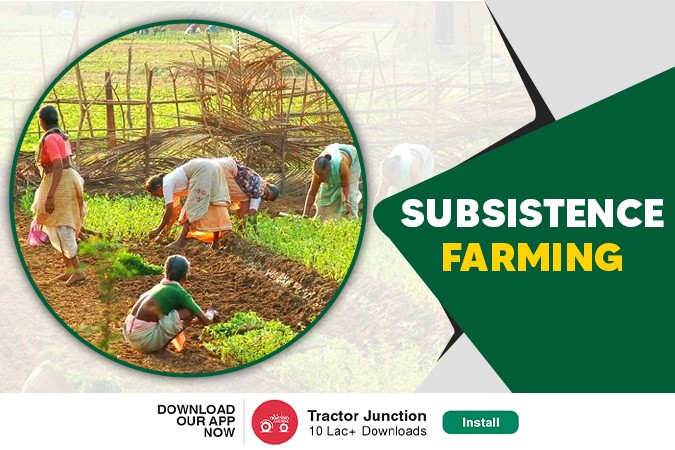
What is Subsistence Farming?
Subsistence farming is a type of agriculture in which crops are cultivated to fulfil the living needs of farmers. Therefore, this farming is done on a small scale where there is no surplus sale of trade. That’s why this farming is considered family farming, as it just completes the food needs of farmers and their families. Farming is widely practised traditionally, which means they use a low level of technology and household labour. In this type of farming, few acres of land are required, and family members are enough for cultivation.
Characteristics of Subsistence Farming In India
Following are the main Characteristics of subsistence farming:-
1. Land Use
In this farming, small lands are used to grow crops approx 1-3 hectares. Their traditional and small land is enough for farming. The goods are produced only for the consumption of the family.
2. Labour
In this farming, labouring is high, and mostly family labour works on their farms. Sometimes, farmers hire labour because they were busy at the time of cultivation.
3. Power and Transport
In so many countries, livestock is the primary source of power. Due to livestock, they can plough fields, carry their loads and transport their goods. Facilities such as electricity and irrigation are not used in this farming. Also, farmers do not use old seeds and great yielding varieties of fertilizers. Hence, the production of output is small or less.
4. Productivity
In this farming, farmers provided fewer inputs. For example, farmers have not purchased seeds, cow dung manure etc., which means yields per hectare, production per person and overall productivity are low.
5. Income and Living Standard
Their income is not dependent because they are below the poverty line. That means whatever farmers can grow, only that much they have for taking care of their livelihood.
6. Role of livestock
Livestock plays a vital role in this farming as livestock is the power of this farming. The animals are saving banks for farmers, and also, animals are providing special protection to their families. Farmers spent a lot on them because if a crop fails, it can be sold and helped survive economically. In addition, livestock dairy products, meat and eggs are readily available to farmers’ families.
7. Social and Cultural Reasons
For social and cultured reasons, in traditional farming, cattle, horses, camels and goats highly demanded in many LDC’s. Therefore, family status measured by the kind and number of animals they own.
8. Element of Uncertainty
In this farming, the element of risk is very high. The failure of one or more major crops breaks the farmer’s whole year’s efforts.
Types of Subsistence Farming
There are two types of subsistence farming.
1. Primitive subsistence farming
2. Intensive subsistence farming
What is Primitive Subsistence Farming?
Primitive subsistence farming known as the oldest form of agriculture. However, it is known as simple subsistence farming. This kind of farming happens on a self-sufficient basis, and farmers raise food according to their family’s needs. If some small surpluses may be left, then for cash, they exchange their goods. Primitive farming does in the tropics by many different peoples. Also, this farming define in two forms, one is Shifting cultivation, and another is Nomadic Herding.
Characteristics Of Primitive Subsistence Farming
- Mostly the forest cleared by fire, and ashes add to the soil fertility. ‘slash-and-burn agriculture’ known as Shifting cultivation.
- Manual labour requires clearing the land to grow food for a few people.
- Crops plant at calculated intervals, often between the other plants, so the yield can fluctuate to provide food all year.
- In Nomadic Herding, the shepherds move from one place to another on fixed routes for fodder and water.
- The products produced through this way are milk, meat and many more.
What is Intensive Subsistence Farming?
The term intensive subsistence agriculture define by high output per land and relatively low output per worker. Although, the nature of this agriculture has changed. ‘Monsoon type of agriculture’ is another name of intensive agriculture as it did in monsoon lands of Asia.
Characteristics Of Intensive Subsistence Farming
- It involves a smaller plot of land and more labour to grow the crop, less costly equipment, and many more.
- The climate of this cultivation with sunny and fertile soils allows growing more than one crop annually on the same land.
- This cultivation spread in the densely populated area of the monsoon zones including East Asia, South, Southeast, etc.
Related Blog
What is Organic Farming in India
Top 10 Agriculture Business Ideas
